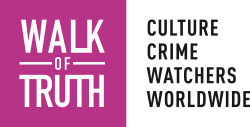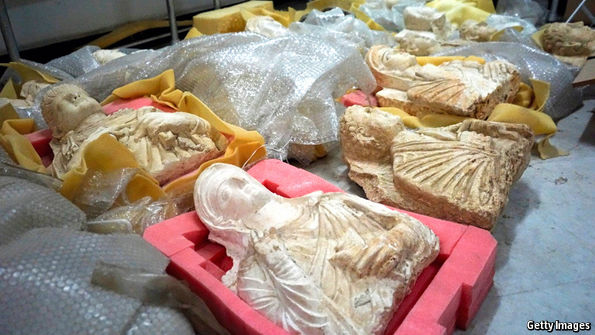But what if there is a deadly and growing connection between the high culture epitomised by great Western cities and the nefarious purposes of the group known as Islamic State (IS), ISIS, ISIL or Daesh? In February the United Nations Security Council formally listed the traffic in antiquities from Syria as well as Iraq as one of the ways in which terror was being financed, and it enjoined member states to stop the trade by any means possible.
America’s Federal Bureau of Investigation, at least, took that instruction seriously. In August, it issued a dire warning to American art dealers, saying that if they traded in cultural objects looted from sites in Iraq and Syria, they might be prosecuted under laws designed to stop people supporting terrorists. It noted that the American State Department had evidence of looting by IS on an “industrial” scale from sites under its control in those two countries. The head of the FBI’s art detection team, Bonnie Magness-Gardiner, said there were “credible reports” of American citizens being offered cultural property stolen from sites in that region.
What about the art market in London, which ranks with New York as a centre of expertise in conserving, displaying, and perhaps most importantly, selling great works of art from all corners of the earth? The Art and Antiques Unit at the British capital’s Metropolitan Police Service is committed to stopping the sale of stolen art by terrorists and other wrongdoers. But it has only a tiny fraction of the resources of the FBI. There was an outcry a few years ago when its annual budget was slashed to the low hundreds of thousands of pounds, and it was forced to appeal to the art market’s wealthy players to plug the gap.
Boris Johnson, the mayor of London who is responsible for policing, vowed today to do everything in his power to step up the fight against “blood antiquities” being traded through London. He deplored the fact that terrorist groups “see the destruction and looting of priceless antiquities and artefacts, in part to fund their violent activities, as central to their warped ideology of hate”. He also offered London’s services as a temporary secure haven for stolen cultural objects that could not be returned to their war-torn homelands.
Mr Johnson was speaking at the launch of an All-Party Parliamentary Group for the protection of cultural heritage from violence and war, whose co-chairmen include Lord Colin Renfrew, a famous archaeologist. Lord Renfrew said he would press the government to send a long-overdue moral signal by ratifying the 1954 Hague convention which bars looting and trafficking of art in war-time.
Police budgets can and should be boosted, and treaties ratified, but in the end the London art market can only maintain its good name by policing itself. Over the years, the art experts of London have done some honourable things (think of the help which British curators gave to restoring the Baghdad Museum and the £3m grant the government has just approved to set up an emergency heritage-management programme in Iraq), and they have also winked at a lot of dubious transactions. But keeping the art market free of “blood antiquities” is a task that should concern all interested parties, from auction houses and galleries to buyers and the general, art-loving public.

